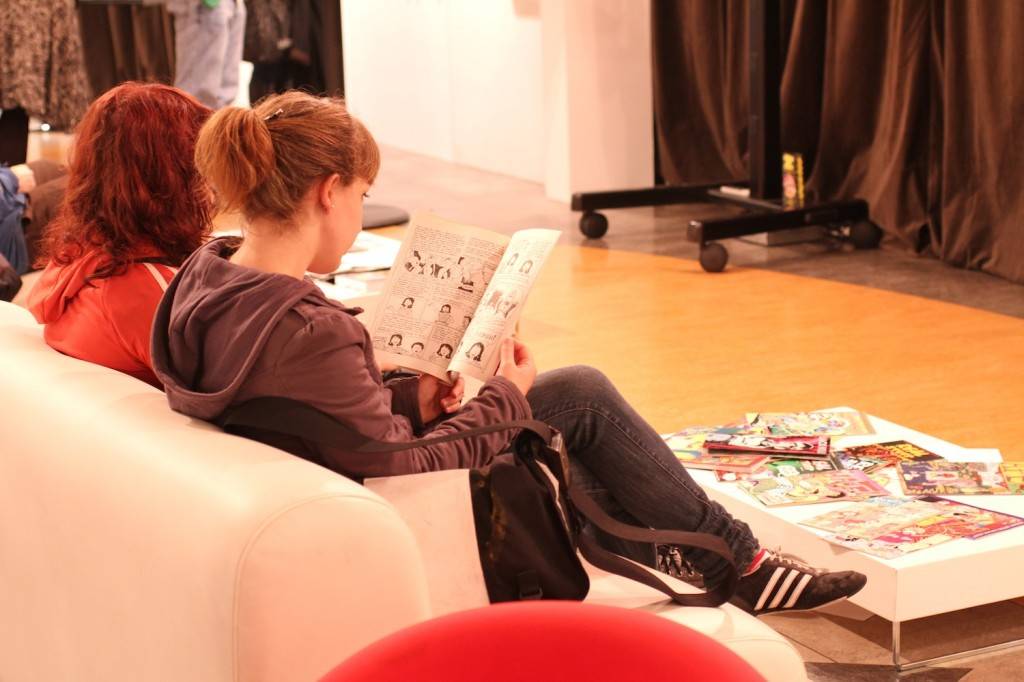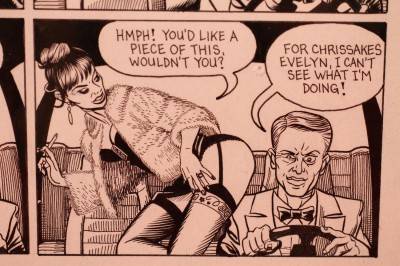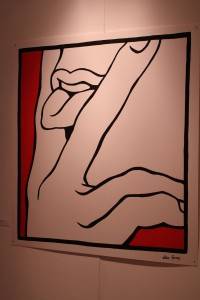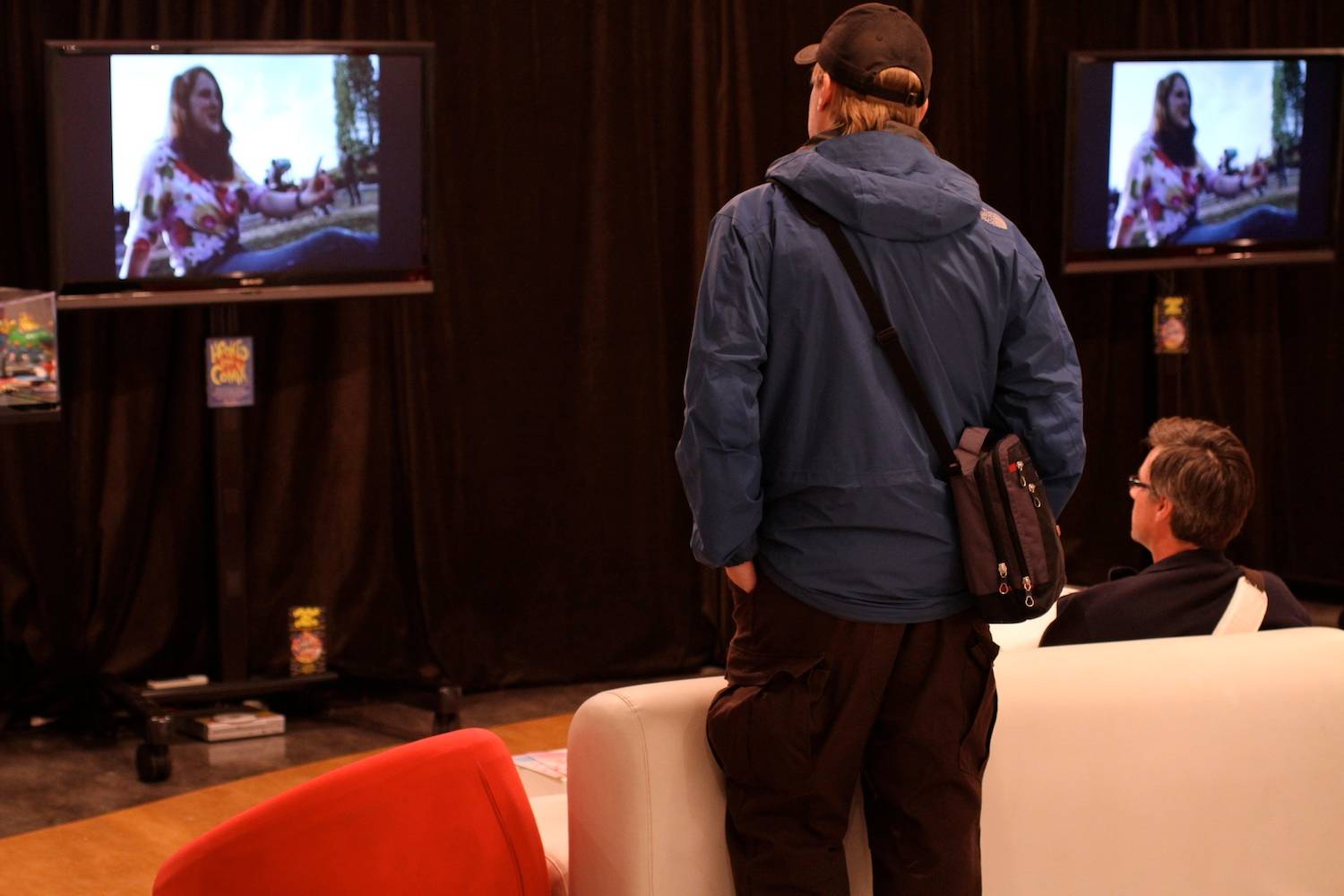Counterculture Comix – Bumbershoot 2010
– text by Shawn Conner/photos by Robyn Hanson
At this year’s Bumbershoot, Counterculture Comix – A 30-Year Survey of Seattle Alternative Cartoonists showcased the work of luminaries such as Peter Bagge (Hate), Jim Woodring (Frank), and Lynda Barry (Ernie Pook’s Comeek), as well lesser-known talents like Ellen Forney and Jim Blanchard as well as up-and-coming artist D.J. Bryant. The 2006 documentary Hooked on Comix, featuring interviews with people like Julie Doucet (Dirty Plotte) and Daniel Clowes (Ghost World), ran continuously.
Curated by Larry Reid of Fantagraphics Books, it was an eye-popping display, even if you were familiar, as I was, with most of the work (I suspect Counterculture Comix might be a little more exciting, if overwhelming, for someone with little or just passing, knowledge of, say, Woodring’s other-dimensional whimsies or Bagge’s contorted grunge rockers).
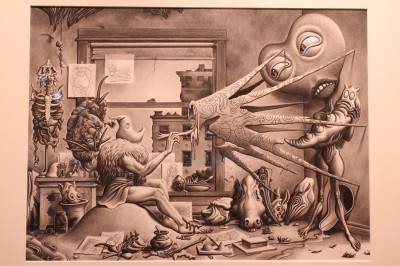
Jim Woodring's "The Artist's Eye", on display at Counterculture Comix, Bumbershoot Seattle Sept 4 - 6 2010. Robyn Hanson photo
Tracing the evolution of the scene from the city’s alternative newspapers, including rock ‘n’ roll monthly The Rocket, which gave many of the city’s artists an opportunity to do covers and spot illustrations, Reid points out that the alternative comics boom coincided with grunge, when the alternative became mainstream and artists like Bagge could collect a paycheck for designing art for a series of “grunge” pencils.
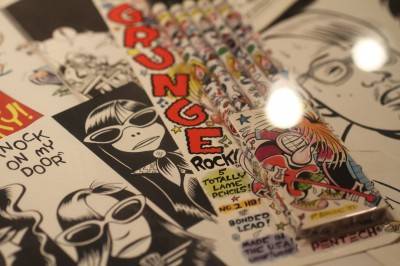
Peter Bagge's grunge penciels at Counterculture Comix, Bumbershoot Seattle Sept 4 - 6. Robyn Hanson photo
Oddly, it seems Seattle didn’t have much of an alternative, or underground, comics scene before the 1980s and Fantagraphics (a Seattle-based publisher). Perhaps all the cartoonists were soaking up the better weather in San Francisco. But even Vancouver had Rand Holmes, an artist whose exemplary work is among the highlights of 1970s comics (or “comix”) art. By the time of the alt-comix boom, though, Holmes was living on Lasqueti Island, painting and hunting. Fantagraphics has just published the first retrospective of Holmes’ work, The Artist Himself; we’ll have an interview with author Patrick Rosenkranz next week.

